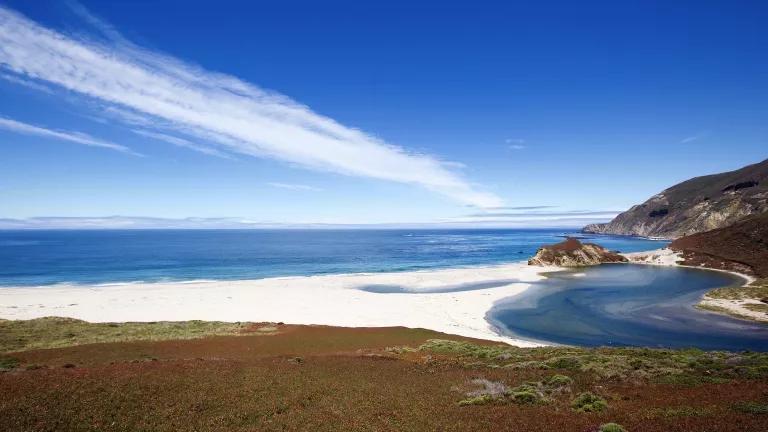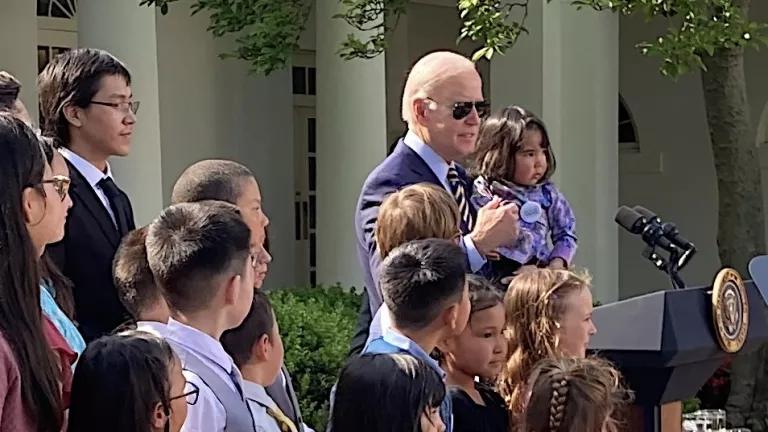Biodiversity and Climate Crises Demand Strong Action
Top takeaways from a new report on year one of the America the Beautiful initiative

Little Sur River, Monterey County, California
© Brenton Spies Photography Gazos Creek State Beach, San Mateo County, CA
The science is clear: We must protect more of the planet in its natural state to fight the climate and biodiversity crises. A week after his inauguration, President Biden met this challenge and set us on a path to conserve 30 percent of the nation’s land, inland waters, and ocean areas by 2030 (often called “30-by-30” or “30x30”). Guidance for how the administration would achieve this ambitious target was laid out as the America the Beautiful campaign, aimed at taking action to reduce biodiversity loss, defend against climate change, and increase equitable access to nature.
The recent report on the America the Beautiful initiative details the nation’s first-year progress on meeting the campaign’s goals. Here are four high-level takeaways on where we stand nearly a year into this landmark effort, and our recommendations to ensure the administration can deliver on the promise of 30x30.
1. We have no time to lose.
Warmer winters. Acidifying waters. Eroding farmlands from more extreme rainfall events. Dramatic declines in bird populations. A U.S. where roughly a third of plant and animal species are at risk of extinction. This is not our future; it is our present. These findings and others from report reinforce the sheer importance and urgency of our nation’s first conservation campaign.
2. The 30x30 target must be met with strong, durable actions.
Thirty by thirty isn’t just a slogan. It’s what scientists have called for to stem the biodiversity and climate crises. To meet the America the Beautiful campaign’s stated biodiversity and climate resilience goals, actions are required that result in significant and lasting benefits for ecosystem health. For example, in the ocean, science shows that fully and highly protected marine protected areas are far more effective than other methods at conserving biodiversity, protecting ecosystem structure and function, and enhancing ecosystem resilience. We need to create more of these strongly protected areas to successfully reach our 30x30 goal.
Unfortunately, this report puts off defining what counts toward the 30x30 target until 2022, and leaves open the possibility that weak actions could contribute. A formal comment period is coming early next year to collect feedback on what the American Conservation and Stewardship Atlas, a tracking mechanism for conservation, will look like. The decisions about what counts matter, and they need to be made as soon as possible so that our nation can work together toward the target.
3. This is an all hands on deck moment.
We are in a period of great change and must act now to save nature for our shared future. But the strong, enduring actions we are reaching for can only result from working together. The U.S. can only reach 30x30 by doing more to help people protect the places that matter to them, in a manner that meets local, state, Tribal, and regional needs.
The America the Beautiful campaign rightly stresses the importance of an inclusive, locally led process, of building together toward durable protections. The administration is doing important work to redress past injustices to Native American Tribes, elevate the role of Indigenous Traditional Ecological Knowledge, and center Tribal sovereignty and self-determination. The administration is also engaging with similar state efforts, like the exciting 30x30 work underway in California. We support the administration’s outreach efforts and urge for more. New stakeholder bodies like the newly proposed Marine and Coastal Area-Based Management Federal Advisory Committee can help us work through science-based approaches to conserve and restore our shared natural heritage together.
4. We need to embrace a bold conservation ethic and use all the tools we have.
Achieving our 30x30 goal requires an all-of-government approach, across multiple levels of government, and across all regions of our nation. We are excited to see the administration bringing all the relevant agencies to the table to consider the many tools we already have— from applying the Roadless Rule to creating new national monuments through the Antiquities Act to restoring Indigenous management and ownership of tribal lands – to make a difference.
America the Beautiful’s first progress report includes several critically important administration actions undertaken this year—from restored protections for the majestic jewels of biodiversity and culture that are Bears Ears, Grand-Staircase Escalante, and the Northeast Canyons and Seamounts National Monuments to reinstated protections for the Tongass National Forest under the Roadless Rule and re-initiation of the process to protect Bristol Bay and the legendary wild salmon fishery it supports. These are significant successes.
Now, as we enter year two of this initiative, we must look beyond repairing harms from the past administration to new actions to help protect our home in the face of the global climate and biodiversity crises. We need to secure the science-based strong protections we need to protect the clean water, clean air, and healthy forests, farms, and oceans people depend on for life as we know it. We must pull all the voices into the discussion. And we must act now, while we can make the greatest difference.





